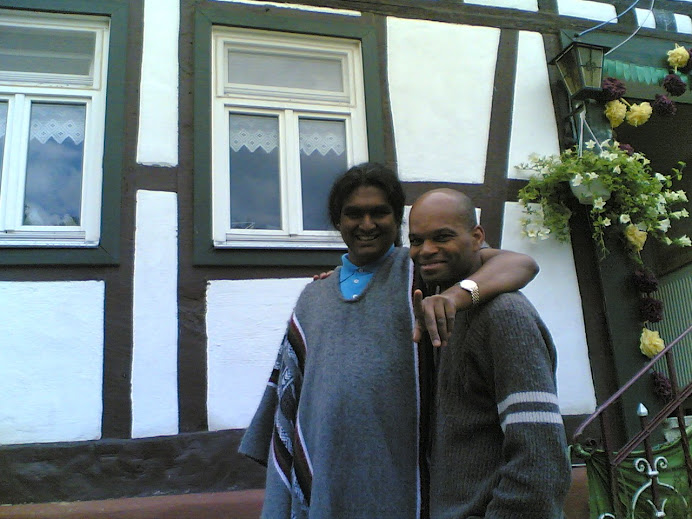 Darwin was the first to propose that long necks evolved in giraffes because they enabled the animals to eat foliage beyond the reach of shorter browsers. That seemingly sensible explanation has held up for over a century, but it is probably wrong, says Robert Simmons.
Darwin was the first to propose that long necks evolved in giraffes because they enabled the animals to eat foliage beyond the reach of shorter browsers. That seemingly sensible explanation has held up for over a century, but it is probably wrong, says Robert Simmons.Simmons, a behavioral ecologist at the Ministry of Environment and Tourism in Windhoek, Namibia, believes giraffes developed long necks not to compete for food but to win mates.
Simmons was studying eagles in Sabi Sand Reserve in South Africa when he happened to come upon a pair of male giraffes locked in combat. Male giraffes battle for mates by swinging their powerful necks--which can be over six feet long and weigh more than 200 pounds. The momentum generated allows them to slam their heads into their opponents with vertebrae-shattering--and occasionally lethal--force. In these contests, males with the longest, thickest necks usually prevail.
As Simmons watched the fight, he became convinced that this competition for mates, not stretching for treetop food, was what drove the evolution of the neck. If competition for food had spurred the elongation, says Simmons, then you would expect giraffes to graze mainly from tall acacia trees beyond the reach of other savanna inhabitants. But giraffes feed mostly with their necks bent, along low bushes. Moreover, their short, stubby horns probably evolved to better concentrate the force of their head blows.
Storyteller: Robert Simmons. Simmons, a behavioral ecologist at the Ministry of Environment and Tourism in Windhoek, Namibia
Source: DISCOVER Vol. 18 No. 03 March 1997 Medicine
See Also: AWF





.jpg)






1 comment:
Why compicate the story? We all shoud know that girrafes have long neck because it was the God's desire.
Post a Comment